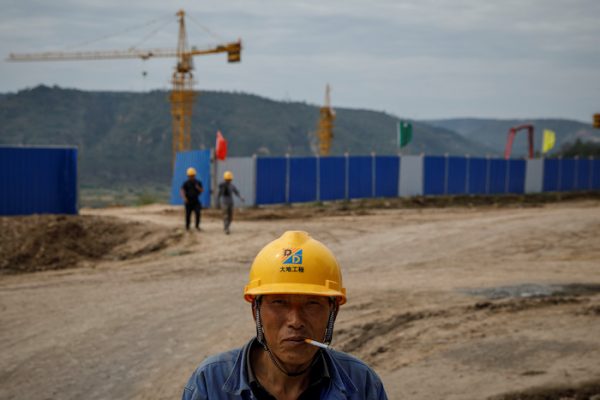Rationing in Zhejiang, Jiangxi and Hunan provinces raised speculation that coal supply may be impacted by the central government blacklisting Australian imports since October. But before the embargo, Australian exports only accounted for under 3 per cent of coal used for power generation in China. While coastal Zhejiang was a key consumer of Australian coal and Jiangxi receives some via river-borne trade, landlocked Hunan is more dependent on domestic coal.
Several factors led to the rationing. First, the rapid recovery of the Chinese economy post-COVID-19. Second, an especially cold winter in central China. Third, insufficient transmission infrastructure. And fourth, strict energy efficiency targets.
While strict COVID-19 lockdowns impacted economic activity in the first quarter of 2020, stimulus measures led a quick recovery, with year-on-year growth reaching 6.5 per cent by the end of 2020. Electricity generation grew by over 9 per cent year-on-year after being around 5 per cent lower year-on-year in the first quarter. The provinces affected by power rationing saw a surge in demand in December due to increased economic activity and cold temperatures.
High winter demand masks the low level of utilisation and the persistence of a development model that favours cheap finance and subsidies to heavy industry and coal power. The model worked in the decade leading up to the global financial crisis as Chinese exports surged — but demand has flatlined and local governments did not adapt.
Prior to the pandemic, China’s coal-power fleet ran at about 50 per cent of capacity, and by late 2020, plants in Zhejiang and Hunan ran at 40 per cent. At these levels, much of the coal-power fleet will only be needed during peak demand. This is set to decline further as renewables continue growing rapidly. China’s electricity pricing mechanism does not provide peak pricing to incentivise operators’ readiness to ramp up if called upon, leading to a supply crunch once the post-COVID-19 industrial surge kicked in.
In December, Hunan saw a peak load of over 33 gigawatts (GW) — over 10 per cent higher than that seen the previous year, and exceeding local dispatchable generation capacity by about 4 GW. On 7 January, Jiangxi saw a peak load of 28 GW — about 16 per cent higher than a year earlier, roughly 6 GW beyond dispatchable capacity. For perspective, Australia’s coal-power fleet capacity is about 25 GW.
At least 4 GW in Hunan were offline due to what was described as technical faults, though speculation is that this was a case of operators refusing to operate at a loss due to high coal prices. Hydro, solar and wind power output were also impacted by the cold weather.
The central grid region, to which Hunan and Jiangxi belong, has 330 GW of thermal and hydropower, and should cope with an overall peak load of 164 GW. But the grid is not as well integrated internally or connected externally as it should be. Plans to increase capacity in coming years should add some stability to the central grid. Improving intra-grid transmission, such as connection to Sichuan and Hubei hydropower resources, would also help.
Hunan said it was entering a ‘war state’ to deal with power issues, requiring industrial and commercial users to avoid consumption during peak hours. Jiangxi also intervened to shave morning and evening peak loads, asking companies to reduce usage, limiting street and other lighting and quoting national policy on the need to limit unreasonable demand for electricity.
In Zhejiang, the heaviest restrictions on power usage were in the city of Yiwu. The provincial government issued special restrictions between 12–31 December, intended to help ‘win the energy battle’ of improving energy efficiency and controlling total energy consumption. It included electricity quotas for everything from government departments to karaoke bars. Some factories were temporarily closed and some essential production had to be run with diesel generators.
A Yiwu city official commented that the measures were due to ‘energy conservation and emission reduction policies’. The Zhejiang government’s 2018 targets aimed to achieve reductions in energy consumption across the economy equal to 2 million tons of standard coal by the end of 2020. Four of Zhejiang’s 11 regional governments failed to meet targets in 2019. While several cities faced rationing of heating supply, Yiwu was hit hardest, asked to limit power consumption by about one third of the normal level during mid–late December.
The arbitrary nature of the year-end targets seems especially harsh given that in February and March, Zhejiang asked companies to run appliances all day, regardless of need, to demonstrate that the local economy was getting back on its feet. A more rational approach would involve incentivising and investing in systemic reform, rather than using such rigid top-down measures.
The first sign of power rationing in many years in China had little to do with Australian coal and a lot to do with reforming China’s energy governance to better respond to market signals, as well as increase its efficiency and reliability. Add to that a particularly severe cold snap and the challenges were significant.
As China works to achieve its pre-2030 peaking and 2060 carbon neutrality goals, investment in grid infrastructure will be required to provide stability as more renewables are brought online. Luckily this is in line with the central government’s agenda for shifting the growth model and is likely to receive much attention in the upcoming 14th Five Year Plan.
Huw Slater is a Senior Consultant (Lead Climate Specialist) at ICF International Inc, Beijing.

